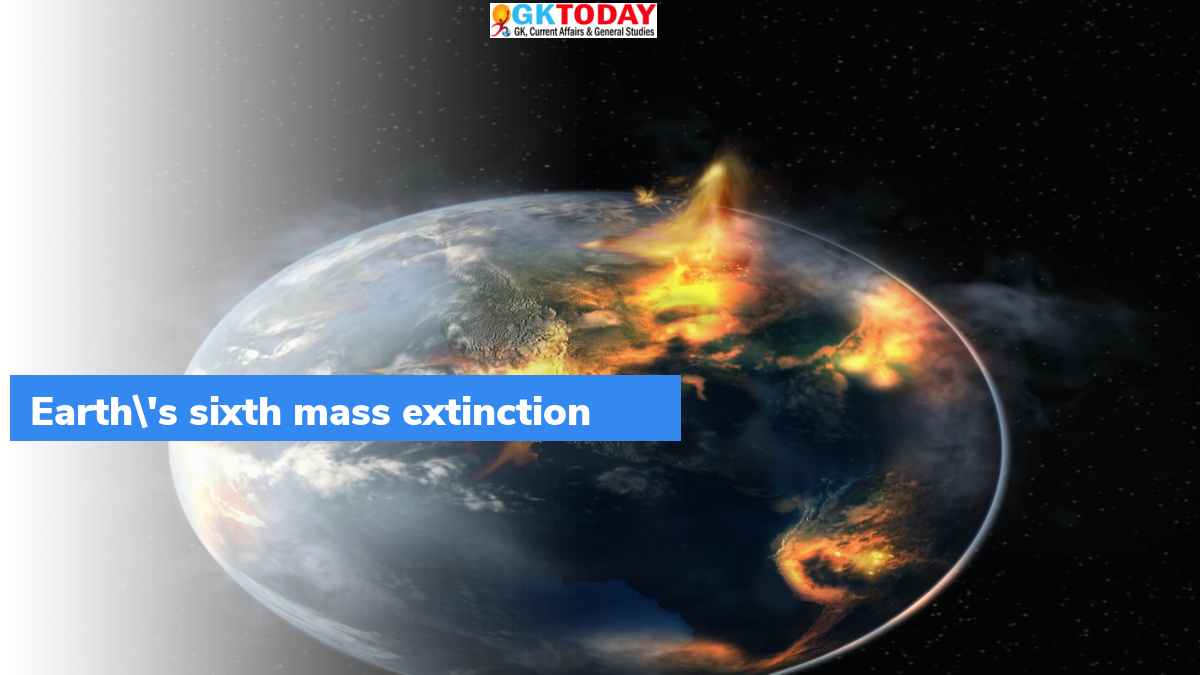Earth’s sixth mass extinction
As per a report published in Biological Reviews, Sixth Mass Extinction crisis is underway on the Planet Earth. It could have already lost around 13 percent of its total species.
Mass extinction on Earth
In the past Earth has witnessed five mass extinctions. The last mass extinction was about 65 million years, that wiped out the dinosaurs.
Highlights
- Earth is witnessing a drastic increased rates of species extinctions and declined abundances of many animal and plant populations. Despite that, experts deny that these phenomena amount to mass extinction.
- They deny on the basis of a highly biased assessment of the crisis, focusing on mammals and birds. However, the assessment ignores invertebrates, which constitute the majority of biodiversity.
Study findings
- The team studied molluscs viz., land snails and slugs, which is the second-largest phylum among known species.
- As per IUCN Red List data, molluscs have suffered a higher rate of extinction as compared to birds and mammals.
- Invertebrates comprise of around 95 per cent of known animal species. Thus, it is essential to include them in biodiversity extinction estimate.
- But among the 1.5 million described species of invertebrates, only around 2 per cent have been fully evaluated.
- According to the team, since 1500 around 1,50,000 to 2,60,000 of all the known species have gone extinct. But in IUCN list, only 882 species are listed as extinct.
Views on Human
The paper is of the view that, “humans are the only species that are able to manipulate Planet Earth on a grand scale. Humans have allowed the current crisis to happen.”
Earth’s sixth mass extinction
The Holocene extinction is referred to as “sixth mass extinction” or Anthropocene extinction. It is an ongoing extinction event of species during present Holocene epoch because of human activity. The included extinctions span several families of fungi, bacteria, plants and animals, including mammals, reptiles, birds, fish, amphibians, and invertebrates. Current rate of extinction is estimated at 100 to 1,000 times higher as compared to natural background extinction rates.
Month: Current Affairs - January, 2022
Category: Environment Current Affairs


